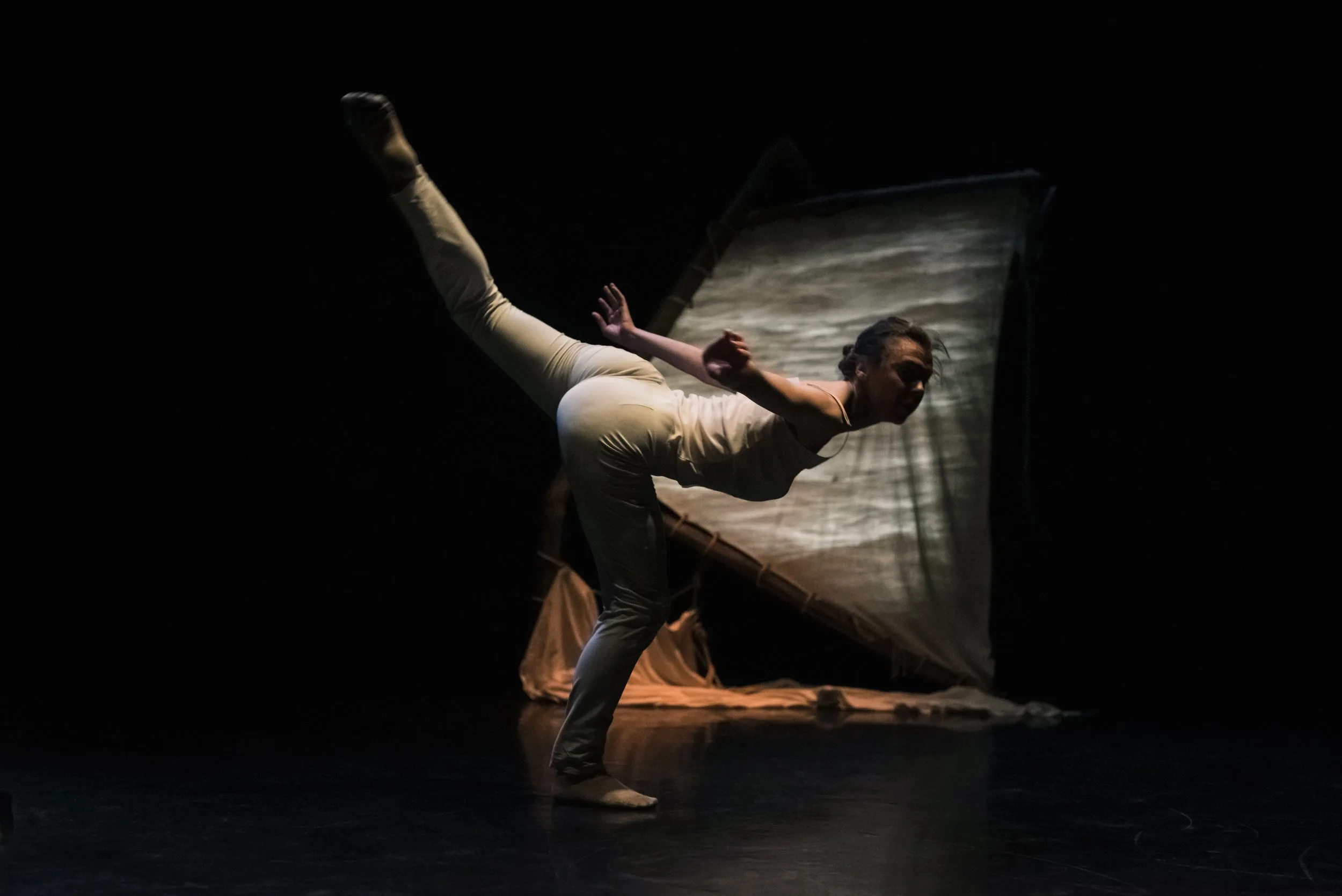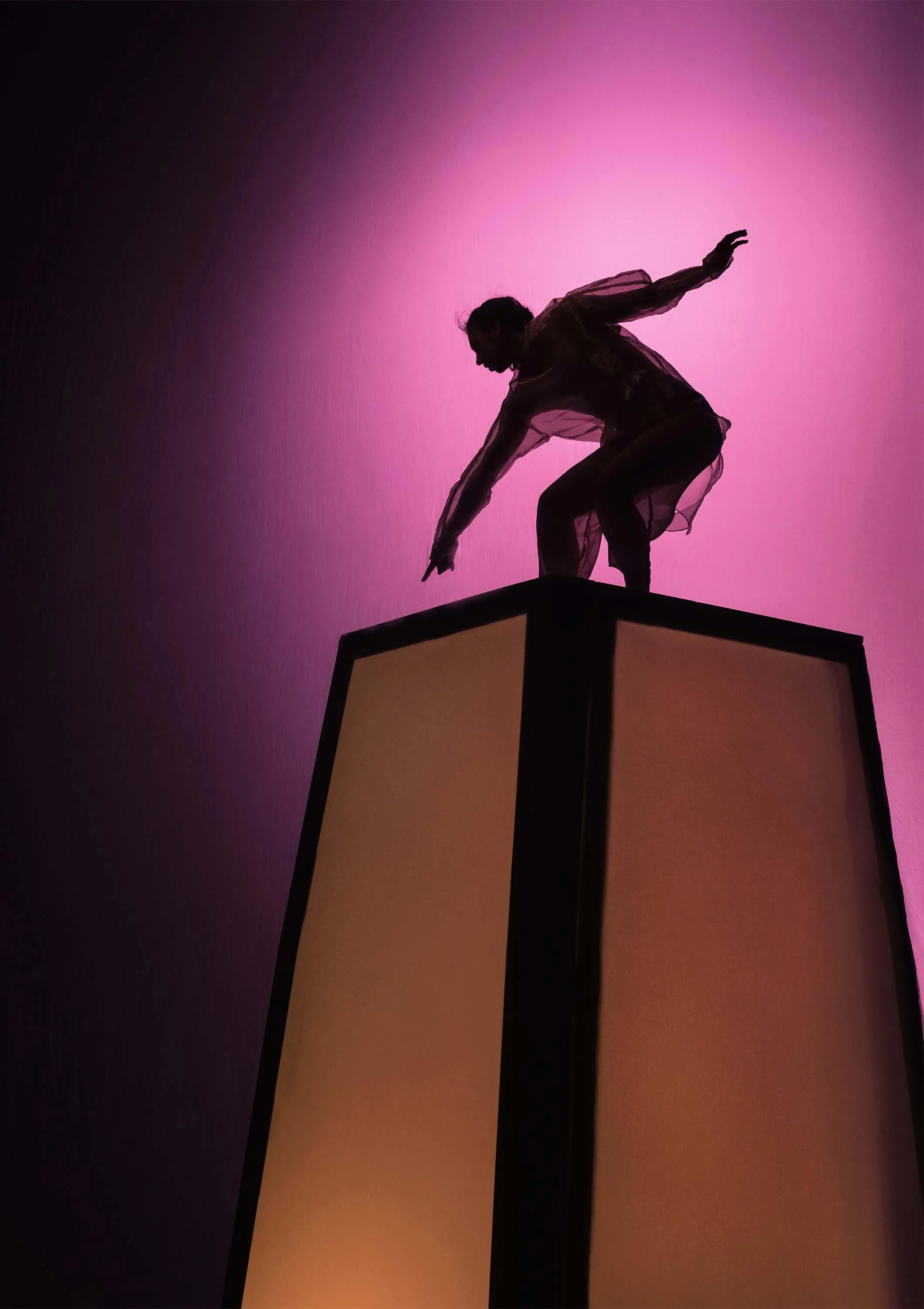Dance review: Alexis Fletcher's assemble is a dreamlike trip into questions of life and death
The solo is a feat of complex choreography, video imagery, lighting, and monumental set pieces coming together
Alexis Fletcher manoeuvres set pieces and projections in assemble. Jon McRae photos.
Alexis Fletcher and Ballet BC present assemble at the Scotiabank Dance Centre to January 15
THE SIMPLE SOLO has, by necessity, become the most prevalent form of dance in these pandemic months. But there is nothing spare about the work former Ballet BC dancer Alexis Fletcher has been creating onstage, her new assemble a complex and ambitious world of video projections, voice-over text, music, set design, and lighting effects interwoven with detailed choreography.
It’s easy to lose yourself in this cerebral and heady exploration of memory and mortality. But pulling outside the experience for a moment, the intricacy and sheer volume of technical cues, cinematic blackouts, and set orchestration is an extraordinary feat to pull off—especially for such a small independent team. Fletcher’s husband and former dancer Sylvain Senez (a Ballet BC and Les Grands Ballets Canadiens alumnus) has created the entire visual design, set design, film and soundscape.
At one point, Fletcher disassembles a tiny model, mirroring a duo of stagehands who smoothly deconstruct the giant, broken sail and replace it with a sort of translucent monolith. At another, she steps in front of imagery of rippling water projected on the sail, and the image shrinks and shrinks until it’s a tiny swirl of light churning on her torso, before it disappears in darkness.
The fact that these artists pull it all off speaks to the passion behind the project, an emotion assemble exudes on all fronts.
The piece separates into two distinct halves. It opens with one of assemble’s most profound sequences, the dancer, with her back to us, bouncing up and down hypnotically, shedding coats, layer by layer, onto a pile at her feet. Layered over the haunting strains of Sigur Rós is Christopher Robins reading words by 16th-century Christian mystic St. John of the Cross, speaking of letting go of material goods: “To come to possess all, desire the possession of nothing.” The broken sail at her right alludes to a shipwreck–or a life event or fracture that’s forced her to discard everything she’s known, and then rebuild.
You could read the second half as her reaching a transcendent state of knowledge that follows that reconstruction—projected images of doors opening symbolizing that awakening. She even strips her white clothes for a new “skin”—gauzy, loose pants and hoodie (another striking creation by Kate Burrows). Fletcher’s own poetry, in voice-over, is cryptic (“I remember the things that happened before I could remember”), but she seems to be working toward meaning in the face of loss. At one point she lies on her side, her legs running at full speed as she’s stuck in one place; at another she scoops her arms frantically inward, gathering everything she can in the time she has. The choreography is fluidly breathless, layered, and complex—always deeply expressive.
There’s a profound and moving sequence at the end where she scrambles up the monolith, and as she reaches and cavorts atop it, a stream of images races across the screen beneath her—like the memories that are said to flood our consciousness as we die.
The overall effect is dreamlike and enigmatic, somehow speaking to the way we’re all working through uncertainty right now. And on a much more literal level, it shows how much a local team can “assemble” when they pour their hearts and creativity into a project.














